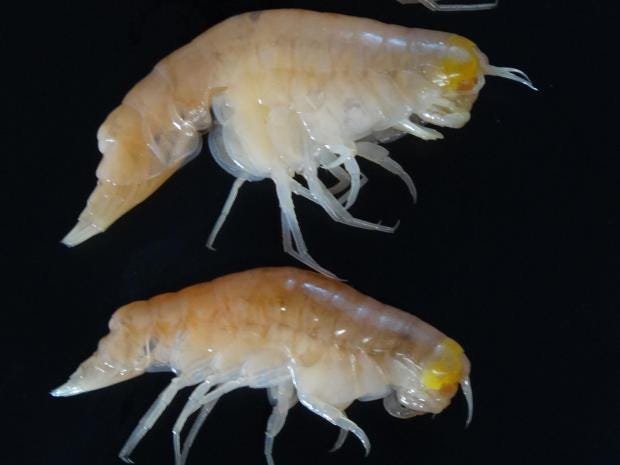The Reach of Chemical Pollutants on the Ocean Floor
"The only Northwest Pacific location with values [concentrations of organic chemical pollutants] comparable to the Mariana Trench is Suruga Bay [Japan], a highly industrialized area with historically heavy usage of organochlorine chemicals."
"[All of this is to say] our proximity to these extreme locations [deep and distant ocean trenches] is far from remote, which is why even the deepest chasms of the ocean are no longer pristine."
Research paper, Ocean Trench environmental pollutants
"[The paper's authors] have provided clear evidence that the deep ocean, rather than being remote, is highly connected to surface waters and has been been exposed to significant concentrations of human-made pollutants."
Katherine Dafforn, marine ecologist, University of New South Wales
 |
| Graphic representation of the Mariana Trench and surrounding terrain. Daily Mail |
It is unclear how identified contaminants made their way into deep ocean trenches, let alone how it is that their saturation levels of pollution are high in the Mariana Trench, one of the deepest in the world's Western Pacific. Its very remoteness and depth led scientists to believe that it and other deep-water trenches would be protected from the presence of environmental pollutants. Researchers from the University of Aberdeen and the James Hutton Institute in the U.K. do have their theories, however.
They theorize that the chemicals whose presence was identified in the Mariana Trench originally came from the "great Pacific garbage patch", referencing a mass of swirling debris present in the northern Pacific, and that chemical pollutants in that great arc might cling to plastic waste which eventually drops through the water column to reach the bottom of the ocean. The authors of the study, recently published in the journal Nature Ecology and Evolution note also that large-scale oceanic currents are capable of transporting chemical-absorbent particles over long distances.
Research previously undertaken has suggested that contaminants on the surface of the ocean can eventually sink, within a few months' time, to deep places as they cling to garbage or the carcasses of dead animals. The very particular pollutants that the researchers focused on were polychlorinated biphenyls (PCBs) and polybrominated diphenyl ethers (PBDEs), both are chemical pollutants capable of causing adverse health effects; neurological, immune and reproductive issues as well as cancer, in humans.
Once commonly utilized in electrical equipment before health and environmental concerns saw them banned in the 1970s, PCBs can still be found, penetrating the ocean depths. PBDEs were used as flame retardants, but they too have been restricted for use in the United States, despite one common type of the chemical still legal for use. It is their presence in marine organisms today that is troubling, despite the reduction in their use, since each has the potential for their potency to be intact for long periods, with a propensity to bind to other particles capable of carrying them throughout the ocean.
 |
| 2016 Deepwater Exploration of the Marianas Extreme Tech |
There is as well a tendency to "bioaccumulate"; where they can build their presence in marine organisms, over time. A study last year undertaken by researchers from the Scripps Institution of Oceanography tentatively concluded that organic pollutants such as PCBs and PBDEs are now present in a widespread arc throughout the world. The targets of this current research for investigation of the presence of chemical agents were the Mariana Trench and the Kermadec Trench north of New Zealand.
The researchers made use of devices they called "deep-sea landers", small vessels which ships released and which dropped to the ocean bottom, before again floating up to the surface. Each of these landers came equipped with traps fashioned to capture minuscule crustaceans called amphipods, known to be present in some of the ocean's deepest and extreme environments. The amphipods were tested for the presence of PCBs and PGDEs.
 |
| Hirondellea gigas, which are amphipods, taken from the Mariana Trench were found to contain high levels of persistent organic pollutants Dr Alan Jamieson |
And the researchers discovered both PCBs and PBDEs to be present in all examined species of amphipods retrieved from both trenches and at all sampled depths, up to 10,000 metres deep, from both locations. The Mariana Trench appeared to have higher concentrations, but both trenches had higher concentrations of the target pollutants than concentrations found typically in clean coastal areas.
Alarmingly, the highest observed concentrations of PCBs discovered in the Mariana Trench, heretofore considered immune to the presence of environmental pollutants, were approximately fifty times greater than levels present in crabs living near the Liaohe River in China, one of the country's waterways known to be its most polluted.
Labels: Environment, Nature, Oceans, Pollution, Research

0 Comments:
Post a Comment
<< Home